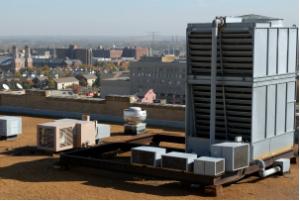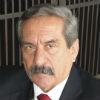 Buildings today must meet certain standards that support the proper operation of each of the physical and technological facilities. Within our industry there is the Regulation of Thermal Installations in Buildings (RITE).
by Camilo Botero*
Buildings today must meet certain standards that support the proper operation of each of the physical and technological facilities. Within our industry there is the Regulation of Thermal Installations in Buildings (RITE).
by Camilo Botero*
The RITE aims to establish the energy efficiency and safety requirements that thermal installations in buildings must meet, which are intended to meet the demand for well-being and hygiene of people during their design and dimensioning, execution, maintenance and use, as well as determine the procedures that allow to prove their compliance.
Scope
For the application of the RITE, fixed air conditioning installations (heating, cooling and ventilation) and the production of domestic hot water will be considered as thermal installations, intended to meet the demand for thermal comfort and hygiene of people who remain (not passers-by) in offices, educational centers, hotels and shopping centers.
The RITE will be applied to thermal installations in new buildings and in buildings built, in relation to their reform, maintenance, use and inspection, with the limitations determined therein.
Benefits obtained
- The protection of human life and health.
- The protection of animal and plant life.
- The Preservation of the environment.
- The prevention of practices that may mislead the user.
- The Rational Use of Energy (URE).
- Consumer protection.
- The satisfaction of contractual and bidding requirements.
- The guarantee of the quality of the facilities with international standards.
- The generation of added value to your investment.
The RITE in Colombia
Reviewing projects, assemblies, maintenance and operation of air conditioning systems, it can be observed that there is a great deficiency in compliance with the parameters of comfort and hygiene, which are highly inefficient in terms of energy use and that are friendly to the environment. Some drawbacks are as follows:
- Normally there is no design.
- The customer sometimes does not know what he is buying.
- You don't know exactly what you need (OPR: Owner Project Requirements).
- You don't see it necessary to pay for a design.
- Buy what the seller or contractor offers, usually at the lowest cost (initial investment).
- It does not take into account the total cost in the life cycle, which includes the well-being of people or the cost of energy and other operating and maintenance expenses.
- You don't know how to compare the different proposals.
- You do not know the performance of the teams.
Aftermath
- There is no regulation or codes and therefore the rules are not complied with
- Very few projects are preceded by a design in which foreign regulations appear, which in many cases are not complied with, due to lack of regulations.
- No measurements of energy consumption or air quality, or energy audits are made.
- The client has surprises upon receiving the finished project: energy cost, non-compliance with air quality (temperature, humidity, dust, odors, air gusts, air stagnation).
With the experience found in Colombia, compared to what is usual in developed countries, I highlighted a great problem in air conditioning systems, which calls for regulation.
Aciem Capítulo Valle and Acaire Capítulo Valle formed a group of specialists in the field of air conditioning and took the initiative to regulate the exercise of the professions in charge of air conditioning in Colombia. For this, the RITE was chosen.
After 1,248 hours-engineer ad honorem, with a group made up of about 10 engineers in the specialties of mechanics, electricity and electromechanics, we have a document that will be presented to the Ministry of Mines and Energies of Colombia.
Soon we will share with the entire HVAC community this important document for their comments and suggestions.
To highlight
Differentiation between standards and technical regulations
Norm:
- Rule or set of rules to follow to carry out an action, because it was thus established or has been ordered in that way.
- Rule that determines the size, composition and other characteristics that an object or an industrial product must have.
- Rule to follow or adjust behavior.
- Procedure to which a job, industry, etc., and pattern or model that is aspired to is adjusted.
- Compliance with the standards is voluntary, from the governmental point of view.
Regulation: A regulation is a legal norm of a general nature dictated by the Public Administration (generally by the Executive Power) and with value subordinate to the law. Regulations are mandatory, such as Laws, Decrees and Resolutions.
To highlight
Technical Standards in Colombia
In Latin America, some of these standards are also implemented that certify current buildings, which gives them greater recognition by the sector and better confidence to those who visit or work in the building.
Technical standards used in Colombia
- Icontec (Colombian Institute of Technical Standards - NTC)
- ISO (International Standards Organization)
- ASHRAE (American Society of Heating, Refrigerating and Air-Conditioning Engineers)
- NFPA (National Fire Protection Agency)
- ASME (American Society of Mechanical Engineers)
- ASTM (American Society for Testing Materials)
- AHRI (American Heating and Institute)
Regulations used for RITE Colombia
- Rite Spanish
- ASHRAE Standards
- AHRI Standards
- Icontec
- EU
- UNE
- SAC
- LEED
To highlight
Technical barriers to trade (TBT)
The Agreement on Technical Barriers to Trade (TBT) seeks to ensure that technical regulations and standards, as well as testing and certification procedures, do not create unnecessary barriers to trade; at the same time it gives members the right to implement measures to achieve legitimate policy objectives, such as the protection of human health and safety or the preservation of the environment.
Technical regulations and product standards may vary from country to country. The existence of too many different regulations and standards poses difficulties for producers and exporters. If regulations are established arbitrarily, they can be used as a pretext for protectionist purposes.
The TBT Agreement covers measures designed to protect the consumer from deception and economic fraud and emphasizes the use of international standards.
The Agreement provides that all rules and regulations must have a legitimate purpose and that the impact or cost of implementing the standard must be proportionate to its purpose. It also provides that if there are two or more ways to achieve the same objective, the least trade-restrictive alternative should be adopted.
Compliance Procedures
Conformity assessment procedures are technical, e.g. testing, verification, inspection or certification, which determine whether products comply with the requirements laid down in regulations and standards. It is usually the exporters who are required to satisfy the duties applied - if they are applied - to those procedures.
If they are not transparent and applied discriminatorily, conformity assessment procedures can be protectionist instruments.
 * Camilo Botero is the current Secretary of the Federation of Ibero-American Associations of Air Conditioning and Refrigeration - FAIAR; he was president of ACAIRE and is president of Camilo Botero Ingenieros Consultores Ltda. He has worked as a teacher in several Colombian universities, guilds and currently in ACAIRE in diploma courses of air conditioning projects, energy efficiency in air conditioning and refrigeration, cogeneration and trigeneration, applied psychometrics, thermodynamics, fluid mechanics, heat transfer and turbomachinery.
* Camilo Botero is the current Secretary of the Federation of Ibero-American Associations of Air Conditioning and Refrigeration - FAIAR; he was president of ACAIRE and is president of Camilo Botero Ingenieros Consultores Ltda. He has worked as a teacher in several Colombian universities, guilds and currently in ACAIRE in diploma courses of air conditioning projects, energy efficiency in air conditioning and refrigeration, cogeneration and trigeneration, applied psychometrics, thermodynamics, fluid mechanics, heat transfer and turbomachinery.













